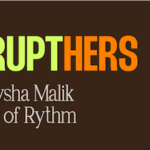Nicole Cuervo
Founder + CEO of Springrose
-
The Disrupthers

Everyone deserves a little support. For Nicole Cuervo (she/her), that’s a non-negotiable. She’s the founder + CEO of Springrose—an intimates start-up that designs easy-on bras for women with limited mobility. “I started the brand in honor of my grandmother Rose, who had chronic pain and found it challenging to get dressed in the morning,” she says. Below, Nicole explains why accessible clothing is a human right, and just how exactly her product works.
Tell us about your product.
Our flagship bra has a unique, patented functionality that allows women to put it on multiple ways, so they can get dressed painlessly, independently, and with dignity.
Why is accessible clothing so important?
The right to adequate clothing is a human right that has often been ignored for people with limited mobility or disabilities. Style and fashion are also tools that help people express themselves and boost their confidence, so it’s crucial for people to have options that they can put on painlessly and independently, and that reflect their sense of self.
How has it been rewarding to work in the adaptive clothing space?
I started Springrose to help people, so it keeps my team and me going every time someone shares what a positive difference the product is making in their life. We developed our flagship bra with the input of 500+ women, so it’s exciting to see our idea come to life and help so many people who were previously underserved.
What are the different ways people can put on the bra?
There are about eight ways, but these are the three most popular ways to put on the bra. I’ll give examples of who might use each one, but every person decides based on their ability and preferences.
|
|




